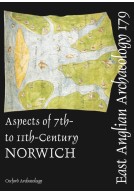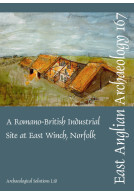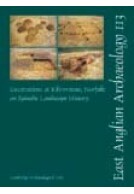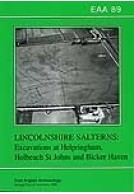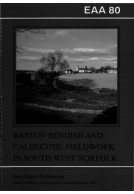EAA 180: Salt-Winning on the Lyn (Paperback)
Anglo-Saxon and Medieval Industry at Gaywood's North Marsh, King's Lynn
Imprint: East Anglian Archaeology
Series: East Anglian Archaeology Monograph
Pages: 132
Illustrations: 73
ISBN: 9781907588143
Published: 17th November 2023
Script Academic & Professional
Series: East Anglian Archaeology Monograph
Pages: 132
Illustrations: 73
ISBN: 9781907588143
Published: 17th November 2023
Script Academic & Professional
You'll be £20.00 closer to your next £10.00 credit when you purchase EAA 180: Salt-Winning on the Lyn. What's this?
+£4.99 UK Delivery or free UK delivery if order is over £40
(click here for international delivery rates)
Need a currency converter? Check XE.com for live rates
(click here for international delivery rates)
Need a currency converter? Check XE.com for live rates
Beneath the housing estates of Gaywood within the urban reach of modern King’s Lynn lies a former saltmarsh — Gaywood’s North Marsh — which once played an important role in the economic and physical development of this dynamic coastal and estuarine landscape. Focused on the eastern side of the Wash and to the north of an ancient inlet known as the Lyn, this marshland was rich in salt or ‘white gold’, gathered from the brine-saturated muds and processed using the post-Roman technique of sand-washing or sleeching. Often the only traces left behind of this once important coastal industry are the denuded hillocks or mounds representing the accumulated waste deposits associated with salt-winning, dozens of which have been mapped in this area. An opportunity to investigate several of these saltern mounds was prompted by the Lynnsport and Greenpark Avenue Primary School developments, leading to a three-year scheme of topographical survey, evaluation trenching and targeted excavation.
Building on previous work by OA East at Marsh Lane, this volume provides a synthetic overview of the salt-making evidence utilising a suite of scientific techniques underpinned by historical research and Bayesian modelling to reconstruct the saltmarsh environment and how this changed over time. One of the key results has been firmly to establish that the sand-washing method was in use on the east coast of England as early as the Middle Saxon period (8th to 9th century), continuing into the medieval period and beyond in some places. A possible association with the Middle Saxon ‘productive’ site at Bawsey is explored, as is the more definite connection with the East Anglian bishops and bishops of Norwich, who once owned this land. Linked to this are the provision of labour, methods of transport and access to fuel. The contribution of salt-working to the economy, notably trade, is assessed as is the impact that this industrial scale of salt production had on the physical environment which ultimately led to piecemeal reclamation and the development of valuable tracts of grazing land. By the 12th century, salt-winning on Gaywood’s North Marsh was already in decline and by the 13th century its death knell was no doubt sounded by the diversion of the River Great Ouse into the Lyn: the fossilised salt-making landscape being recorded by the Gaywood Dragge survey of 1487. This narrative is further enhanced by comparison with similar records for sand-washing on the near continent, and a reconsideration of the evidence from the Lincolnshire side of the Wash.
Customers who bought this title also bought...
Other titles in the series...
Other titles in East Anglian Archaeology...









